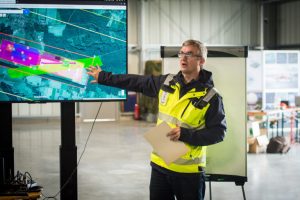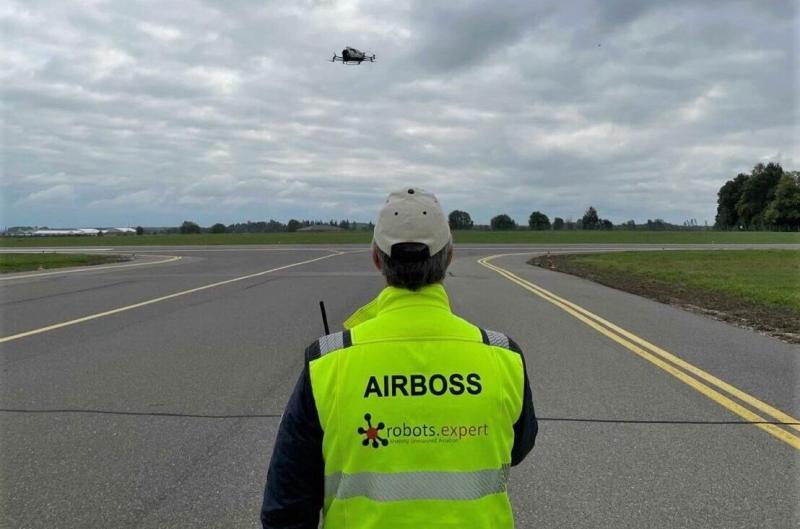The SESAR research project, GOF 2.0 Integrated Urban Airspace Validation very large demonstration, aims to demonstrate the safe, secure, and sustainable integration of unmanned aerial vehicle and air taxi operations in urban airspace. The demonstrations focus on validation of the GOF 2.0 architecture for highly automated real-time separation assurance in dense air space including precision weather and telecom networks for air-ground communication.
In a recent blog, consortium member Robots Expert explains the role played by the Airboss and their responsibilities during drone test flights:
During trials, the Airboss coordinates the safe planning and execution of all flights in a complex environment, including possible coordination with Air Traffic Control (ATC). Scenarios are meant to be challenging enough that unprecedented learnings can be taken away from each trial. Execution is making sure that each event happens smoothly, without putting anyone or anything at an unforeseen risk.
“What makes our role so interesting is that we are working with all the project partners to make sure that risks are anticipated and mitigated to the most possible extent and that the systems support the decision making and anticipation of risks to avoid catastrophes”, says Jonas Stjernberg, Senior VP at Robots Expert (REX), acting as Chief Airboss in the GOF 2.0 trials.

Once on site, the Airboss has a transverse systemic view on everything that happens. The experience often allows them to spot deviations before they occur. Asking the right questions sometimes brings lights to a situation. Very large demonstrations of the scale of SESAR JU GOF 2.0 sometimes require several Airbosses to have eyes on site in different places, sometimes concurrently in different countries and with separate communication channels to maintain safety and drive performance.
Prior to the trials, objectives and success criteria are defined and complex scenarios are drawn involving all partners. For each trial, safety is at the top of the agenda. The briefing conducted by REX in partnership with the trial leaders systematically include the latest weather information, flight conditions, limitations and, of course, rehearsal of the emergency response plan.
“The GOF 2.0 trials have been designed with what we referred to internally as an “onion” concept. In practice, this means that each partner knows what needs to be demonstrated, what situations they may encounter, but does not know what the other partners know or plan to do. In essence, it is less impressing than the drone swarm light shows with hundreds of drones, that we have coordinated in the past, but a lot more complex because it is closer to reality and in a mixed environment with manned aircraft and sometimes at active aerodromes. A real emergency authority or Helicopter Emergency Medical Services (HEMS) flight or a flock of bird can also happen at anytime and disrupt the trial”, says Stjernberg.
The next trials in the GOF 2.0 project are planned to happen in May and June 2022
For more information visit:




